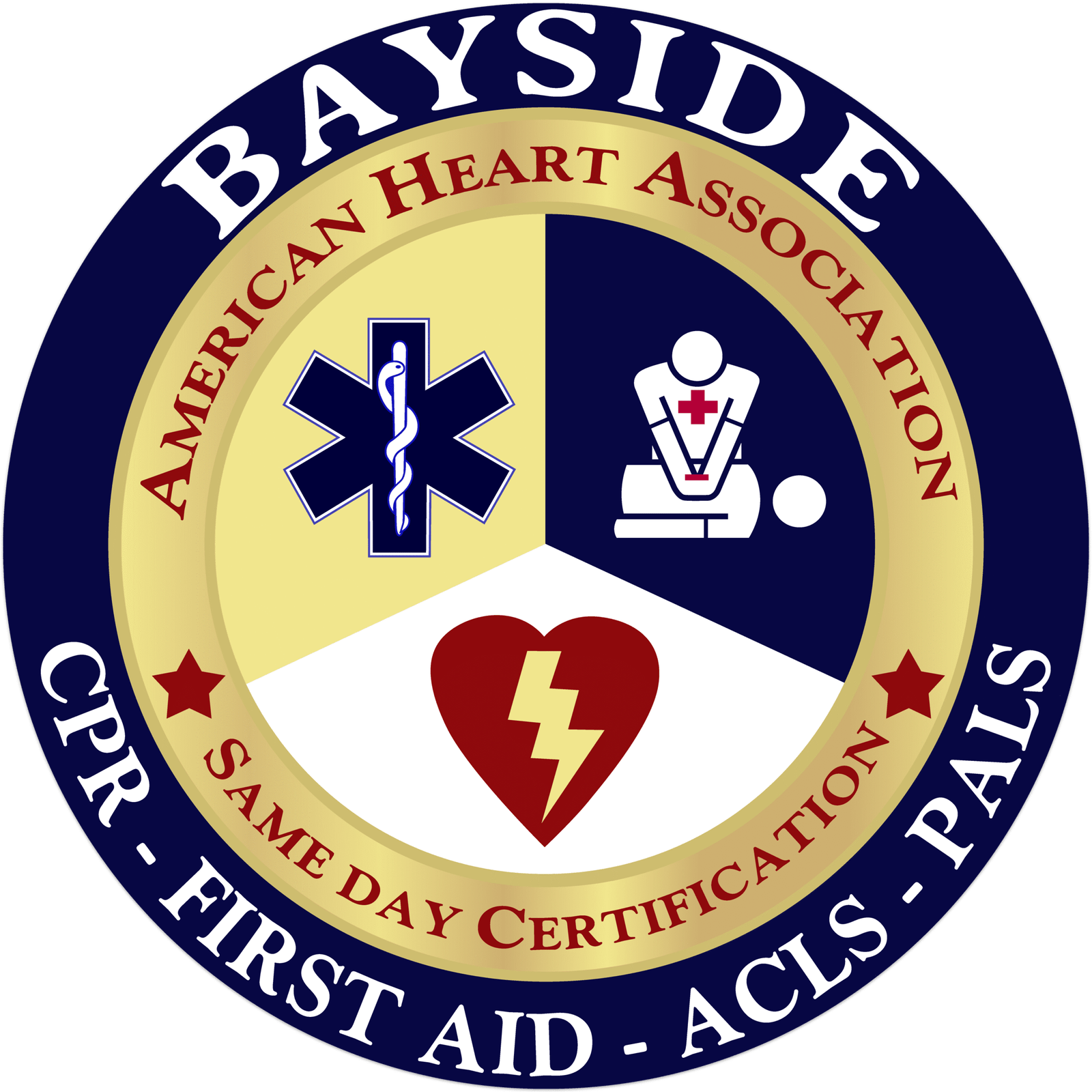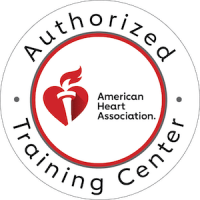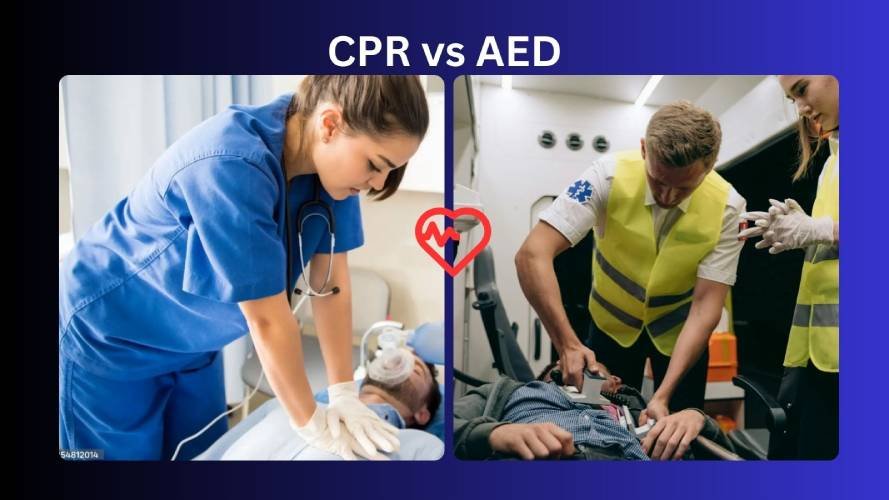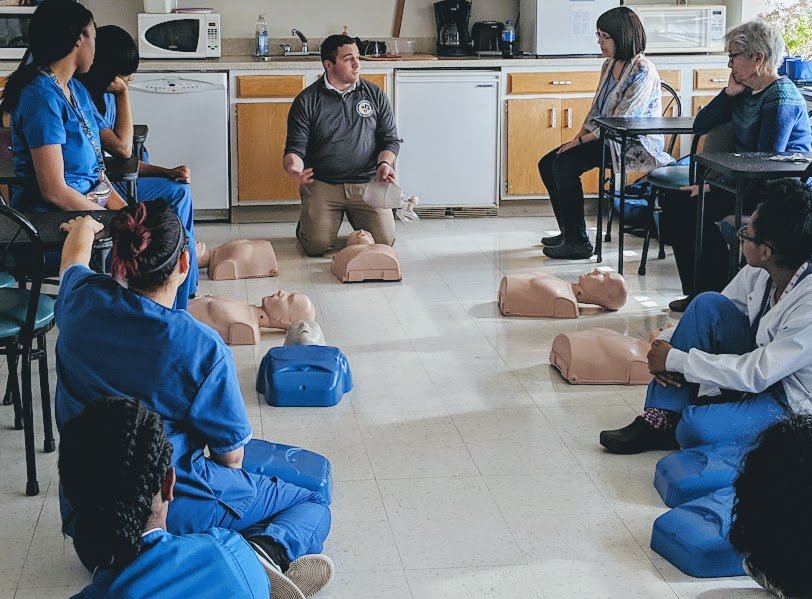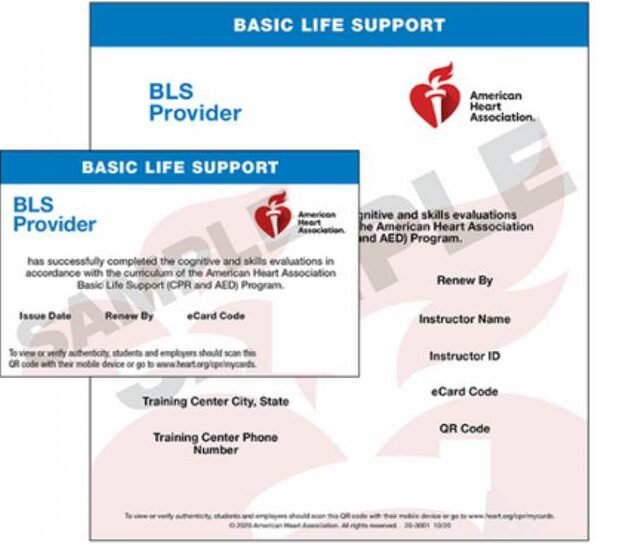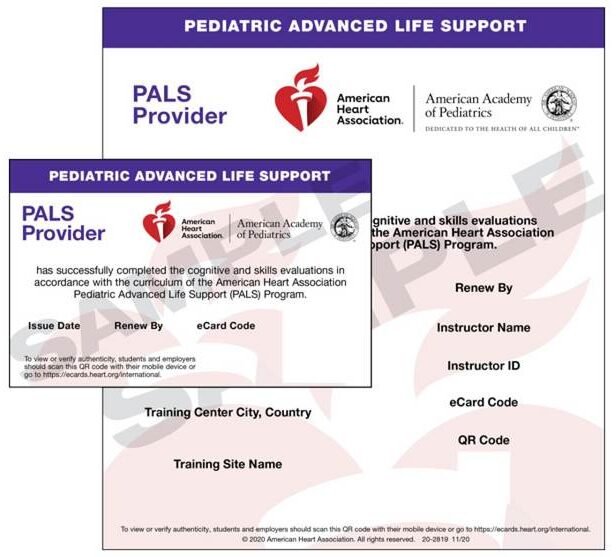When a person suddenly collapses and isn’t breathing, there’s no time to waste. It’s scary, but if you stay calm and bring CPR (Cardiopulmonary Resuscitation) and an AED (Automated External Defibrillator) into action, you can save a life there. So what are these two powerful tools? This guide will help you understand what CPR and AED are and their uses.
One of the most common questions is whether to use CPR or AED first, or whether we can use one instead of the other. We’ll break that down, showing you when to begin CPR, when to use the AED, and how these two work together step-by-step. By the end of this guide, you will feel confident and ready if you’re ever faced with a sudden cardiac arrest or cardiac arrest emergency.
Understanding CPR: Life-Saving Basics
CPR is the first emergency step when someone isn’t breathing, has no pulse, and isn’t responding. It requires chest compressions combined with rescue breaths to manually force blood and oxygen circulation by pressing the chest down. To ensure effective compressions, a chest compression feedback device monitor can be used during CPR to provide real-time guidance and improve the quality of compressions.
What is AED?
An AED is a medical device that checks the heart’s rhythm and, if needed, delivers an electric shock to restore a normal heartbeat. It’s designed for lay people, with simple visual and audio instructions that guide users step-by-step.
When to use CPR and AED?
Do you know what to do when someone suddenly collapses and stops breathing? They could be experiencing sudden cardiac arrest. This is a condition where the heart suddenly stops beating properly, and blood can no longer flow to the brain and body. In those first few minutes, acting fast with CPR and an AED increases their chances of survival.
Begin CPR and use an AED if the person:
- Suddenly collapses
- Is unresponsive when you speak to or shake them
- Is not breathing at all, or is only gasping for air
How to Use CPR and AED Together: A Step-by-Step Guide
- Let’s understand how CPR and AED work together through the step-by-step guide as follows:
Check if the person is responsive by gently shaking them or shouting, “Are you okay?” while looking for signs of breathing or movement. - Call 911 immediately, but if there is someone nearby, ask them to call as well as to get an AED as soon as possible, and you begin CPR without delay.
- Place the heel of one hand on the center of the chest, right between the nipples. Put your other hand on top and interlock your fingers. For adults (8 years and above) and children (between 1 year and 8 years), compress the chest at least 2 inches deep and about one-third the depth of the chest for infants (below 1 year).
- Give 2 rescue breaths after every 30 compressions if you are trained in CPR with rescue breathing.
- Use the AED as soon as it is available. Turn it on, follow the voice prompts, attach the pads to the person’s bare chest and make sure not to touch the person when delivering shocks.
- For Adults (8 years and above): Place one pad on the upper right chest (just below the collarbone) and the other on the lower left chest (below the ribs). Use adult pads, as they are made for adult bodies.
- For Children (between 1 year and 8 years): Use pediatric pads if you have them, and place them like you would for adults. If using adult pads, make sure they don’t touch each other.
- For infants (below 1 year): Use infant pads if available, but you can use pediatric or adult pads if urgent. Just ensure the pads don’t touch each other and lower the AED’s energy setting to protect their delicate hearts.
6. Continue CPR and keep following the voice prompts of the AED until emergency medical help arrives or the person begins to move and breathe normally.
CPR or AED First? Here’s What You Need to Know
Do I start CPR right away, or wait for the AED? The good news is, you don’t have to choose between them. The combination of CPR and AED gives the best chance of survival. Here’s what you need to know:
- Don’t wait for the AED to arrive before starting CPR.
- Don’t be afraid of using an AED. It won’t shock unless it detects a rhythm that needs it.
- Don’t stop CPR unless the AED tells you to pause or help arrives.
- Make sure pads stick well to dry, bare skin. Shave if needed, and wipe off sweat or water.
What is the difference between CPR and AED?
Many people think CPR starts the heart again, but it doesn’t. CPR helps to keep the person alive until the actual medical help arrives, which involves an AED. That’s why having an AED nearby is a blessing, as it helps restart the heart. Both have their own role to play in saving a life. Here is how:
CPR: Buys Time
- When the heart stops, blood flow also stops.
- CPR uses chest compressions to manually pump blood through the body, helping keep the brain and organs alive.
- It does not restart the heart, but it keeps oxygen moving until more advanced medical help arrives.
AED: Restarts the Heart
- It analyzes the heart’s rhythm to see if a shock is needed.
- If the heart is in a rhythm that can be corrected, the AED tells you to press a button to deliver a shock.
- This shock helps to restart the heart or return it to a normal rhythm.
Difference in survival rates due to CPR and AED
In a cardiac emergency, waiting can cost a life. Don’t hesitate, take immediate action. You don’t need to be trained or certified; just starting CPR or getting an AED right away can save someone’s life. The chances of survival increase significantly with access to these two powerful tools. Let’s look at how CPR and AED use impact survival rates in out-of-hospital cardiac arrests (OHCA).
Survival Rate with CPR
CPR helps to maintain blood flow to the brain and heart during a cardiac emergency until the arrival of an AED. It plays a vital role in improving survival chances and enhancing the positive neurological outcome. When performed alone, CPR increases survival rates to about 20-30%. However, survival chances improve significantly when CPR is combined with the use of an Automated External Defibrillator (AED).
Survival Rate with AED
The key to improving the condition of the cardiac emergency patient is to use an AED as soon as possible, ideally within the first few minutes. increase survival rates in cases of out-of-hospital cardiac arrest, particularly caused by ventricular fibrillation (VF) or pulseless ventricular tachycardia (VT).
According to study by J Am Coll Cardiol published in National Library of Medicine shows that the difference in survival rate nearly doubles with and without AED. Without an AED, survival rates for these conditions are typically around 5-10%. When an AED is used promptly, survival chances are typically around 30-50% or even higher, but without its access, it significantly drops to 5-10%. This highlights the role of an AED in offering a better chance for OHCA survival.
That’s why it’s important to get immediate access to both CPR and an AED. The main thing is to respond quickly, without hesitation.
Why Both CPR and AED Are Important?
CPR and an AED are both important when someone collapses suddenly, is unresponsive, and is gasping for air or not breathing at all. CPR helps keep blood and oxygen moving through the body, which protects the brain and other vital organs. On the other hand, AED helps restart the heart or correct its rhythm. They work best together and increase the chance of the survival of the person. Here is how they work:
- CPR keeps blood flowing to the brain and vital organs. It doesn’t restart the heart, but it helps keep the person alive until more help arrives.
- An AED checks the heart’s rhythm and gives a shock if needed. This shock can help restart the heart or bring it back to a normal rhythm.
Final Thoughts: Immediate Action With CPR and AED
Taking action means the difference between life and death in those few minutes in an emergency. You don’t need to be a medical professional to save a life, you just need to be ready to act. As soon as you witness someone collapse, not breathing and responding, never hesitate to start CPR right away as it continues the oxygen flow to the brain and different organs that keep the person alive, and immediate access to an AED at that moment means to secure that chance of survival. The combination of CPR and an AED is a lifesaver but only if you are quick to respond. Want to make a difference? Join Bayside CPR to improve your life-saving skills.
